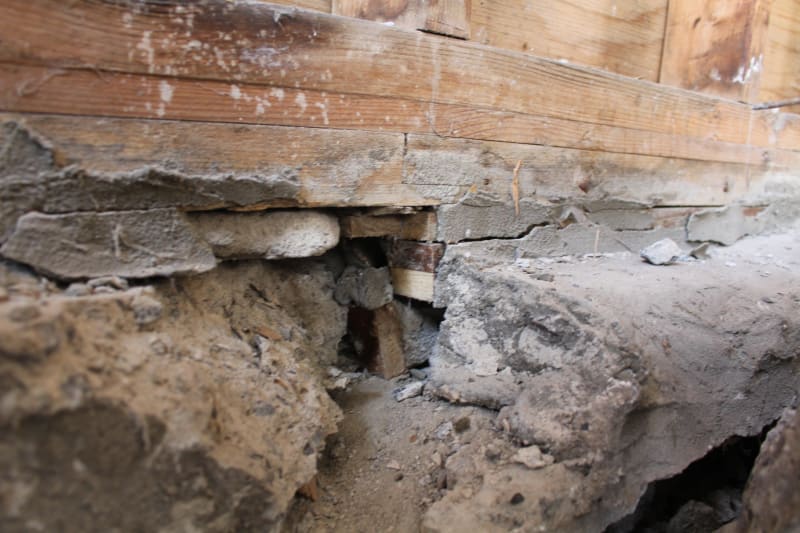CivilSigma
Structural
Had the pleasure of investigating a foundation wall failure of a garage structure: Home built in 1970, in Ontario, Canada. Foundation susceptible to frost heave if not embedded adequately.
First 5 pictures are of the side foundation wall, it is non-load bearing (supports truss gable end and self weight).
Last 3 pictures are of the front garage foundation wall, which is load bearing and supports point loads from garage opening headers above.
Apparently, the home owner noticed a hairline crack on the side wall paring, retained contractors for repair, and after they dug up the soil, they noticed all these cracks.
The foundation wall has moved in "block form" a couple inches. No distortion to wall stud framing or siding along the exterior.
I don't think it's flexural failure of the wall considering that it's effectively pin-pin boundary condition.
The wall failure is near the ground elevation. If it's flexural failure, I would expect the failure to be at mid span, with distortion of framing above.
Could this be a cold joint, gone bad?
What do you think?! This is the first time I've seen residential foundation failure this bad
First 5 pictures are of the side foundation wall, it is non-load bearing (supports truss gable end and self weight).
Last 3 pictures are of the front garage foundation wall, which is load bearing and supports point loads from garage opening headers above.
Apparently, the home owner noticed a hairline crack on the side wall paring, retained contractors for repair, and after they dug up the soil, they noticed all these cracks.
The foundation wall has moved in "block form" a couple inches. No distortion to wall stud framing or siding along the exterior.
I don't think it's flexural failure of the wall considering that it's effectively pin-pin boundary condition.
The wall failure is near the ground elevation. If it's flexural failure, I would expect the failure to be at mid span, with distortion of framing above.
Could this be a cold joint, gone bad?
What do you think?! This is the first time I've seen residential foundation failure this bad

